
We’re rarely in marinas, but in South Africa’s harbors tying up is the norm. Jamie and I have fun walking the docks, checking out other boats; I always have something to learn from the critical eye of my sailmaker/rigging-savvy husband. Most often, it’s the condition of sails; on a blustery day in Durban, rigging mishaps were the theme.
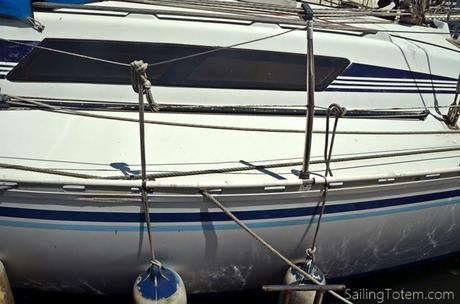
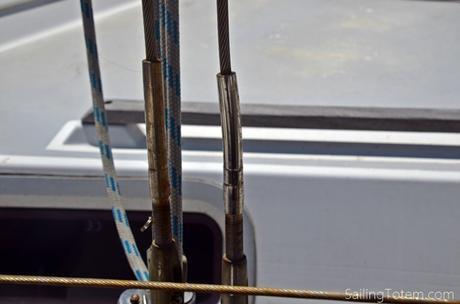
classic “banana” swage
Here’s a swage to wire stay that’s “banana-ed.” The swage is poorly executed, and bent into a curved, banana-like shape. Because the swage isn’t straight, under load it tries to pull straight, and this work hardens both the swage fitting and the wire—shortening their lifespan.

What’s wrong with these chainplates? The original, longer part (painted white alongside the hull) was cut off; the stainless part of the chainplate is the current load-bearing portion. But that’s just ONE BOLT carrying the entire load, tying it to the old chainplate… way too prone to failure.
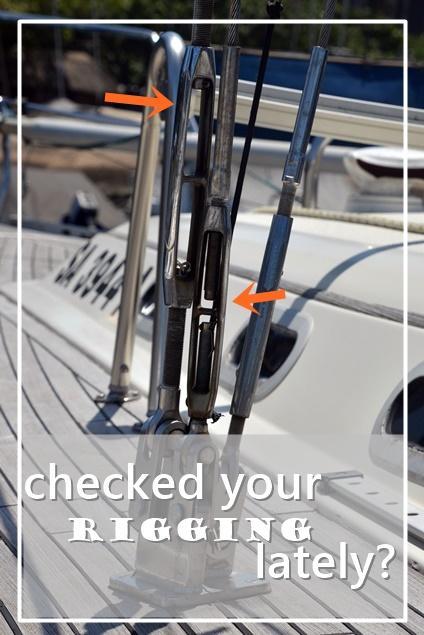
Moving right to that middle turnbuckle, now the wire is clearly way too long. There’s no wiggle room to make any adjustment to tighten it further if needed.
You might get away with this if the rig is perfectly tuned. It was plain from a scan that the rig was not well tuned, and now there are limitations to what can be done because the wires are either too long or too short. Hopefully the owner didn’t pay too much for such sloppy rigging work.
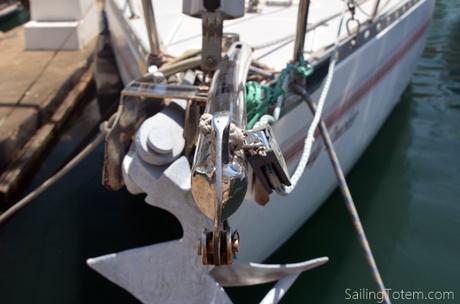
This sprit is bent, suggesting it’s under spec’d and not strong enough for the load it has to bear. Code Zeroes and other asymmetric sails that would attach to sprits like this can generate huge loads, especially shock loads, when sailing in a good breeze and/or lumpy seas.

Hello, weak link: this sprit has a big eye on it, and then this dinky little shackle. The extension is fine, with square structure inside the relatively thin-walled round tube lending strength. The wee little shackle, however…
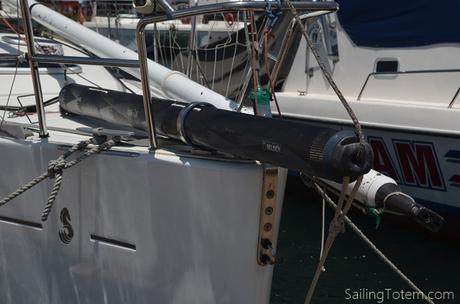
No problems here! Jamie liked this sprit, which serves the same task as the one above. Jamie recommends that his customers buying an asymmetric / code zero / screecher install something similar to this; a number of companies make good, after-market sprits like this. They’re often not beautiful, but they’re very practical and simplify working with downwind sails.
We’ll leave you with that hallmark of developing countries: the good-ol bent rebar anchor.
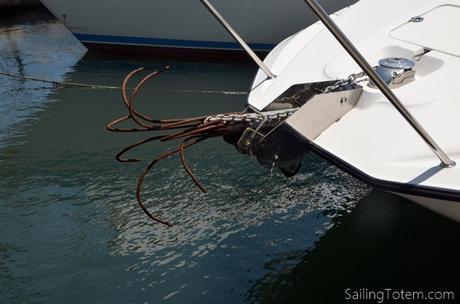
This post is syndicated on Sailfeed.


